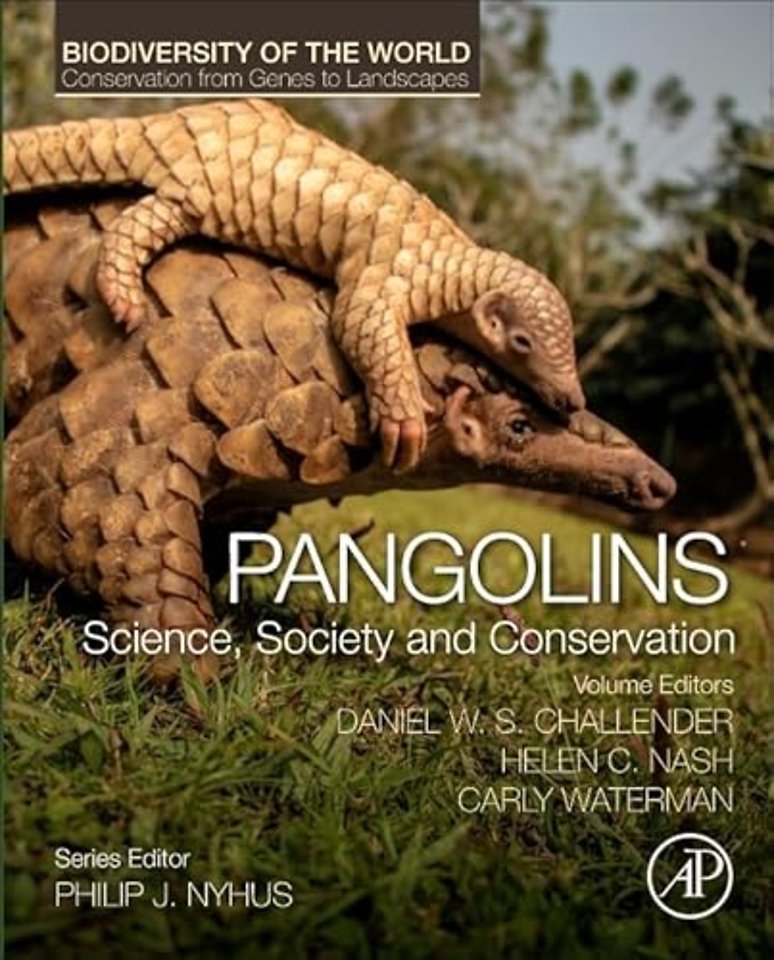<p>SECTION 1 - PART 1: WHAT IS A PANGOLIN? EVOLUTION, PHYLOGENY AND TAXONOMY<br>Overview<br>1. Evolution and morphology<br>2. Phylogeny and Systematics</p> <p>SECTION 1 - PART 2: WHAT IS A PANGOLIN? BIOLOGY, ECOLOGY AND STATUS<br>3. The role of pangolins in ecosystems <br>4. Chinese pangolin Manis pentadactyla (Linnaeus, 1758)<br>5. Indian pangolin Manis crassicaudata (Geoffrey, 1803)<br>6. Sunda pangolin Manis javanica (Desmarest, 1822)<br>7. Philippine pangolin Manis culionensis (de Elera, 1915)<br>8. Black-bellied pangolin Phataginus tetradactyla (Linnaeus, 1766)<br>9. White-bellied pangolin Phataginus tricuspis (Rafinesque, 1820)<br>10. Giant pangolin Smutsia gigantea (Illiger, 1815)<br>11. Temminck’s pangolin Smutsia temminckii (Smuts, 1832)</p> <p>SECTION TWO: CULTURAL SIGNIFICANCE, USE AND TRADE <br>Overview<br>12. Symbolism, myth and ritual in Africa and Asia <br>13. Early biogeographies and symbolic use in Europe in the 16th-18th centuries <br>14. Meat and medicine: historic and contemporary use in Asia<br>15. Bushmeat and beyond: historic and contemporary use in Africa<br>16. International trade and trafficking in pangolins, 1900–2018</p> <p>SECTION THREE: CONSERVATION SOLUTIONS <br>Overview</p> <p>Law enforcement and regulation<br>17. Conserving pangolins through international and national regulation and effective law enforcement<br>18. Combatting Illegal Pangolin Trade – A Law Enforcement Practitioner's Perspective<br>19. Addressing trade threats to pangolins in the Convention on International Trade in Endangered Species of Wild Fauna and Flora (CITES)<br>20. Understanding illegal trade in pangolins through forensics</p> <p>Awareness raising and behaviour change<br>21. No Longer a Forgotten Species: History, Key Events, and Lessons Learnt from the Rise of Pangolin Awareness<br>22. Changing consumer behavior for pangolin products</p> <p>Site-based protection and local community engagement<br>23. Engaging local communities in responses to illegal trade in pangolins: who, why and how?<br>24. Exploring community benefits to reduce illegal wildlife trade using a theory of change approach<br>25. Community conservation in Nepal – opportunities and challenges for pangolin conservation<br>26. The Sunda pangolin in Singapore: a multi-stakeholder approach to research and conservation<br>27. Holistic approaches to protecting a pangolin stronghold in Central Africa</p> <p>Ex situ conservation<br>28. Husbandry of pangolins: lessons and challenges <br>29. Veterinary health and pangolins <br>30. The rescue, rehabilitation and release of pangolins<br>31. Zoo Engagement in Pangolin Conservation: Contributions, Opportunities, Challenges, and the Way Forward<br>32. Evaluating the impact of pangolin farming on conservation</p> <p>Conservation planning, research and finance<br>33. Conservation strategies and priority actions for pangolins <br>34. Research needs for pangolins <br>35. Developing robust ecological monitoring methodologies for pangolin conservation<br>36. Conservation planning and PHVAs in Taiwan<br>37. Leveraging support for pangolin conservation and the potential of innovative finance <br>38. Supporting pangolin conservation through conservation tourism</p> <p>SECTION FOUR: THE FUTURE <br>39. Taking pangolin conservation to scale: the IUCN SSC Pangolin Specialist Group and the next 20 years</p>

